Dell EMC PowerEdge R7415 review
An AMD EPYC storage server with a high core competence
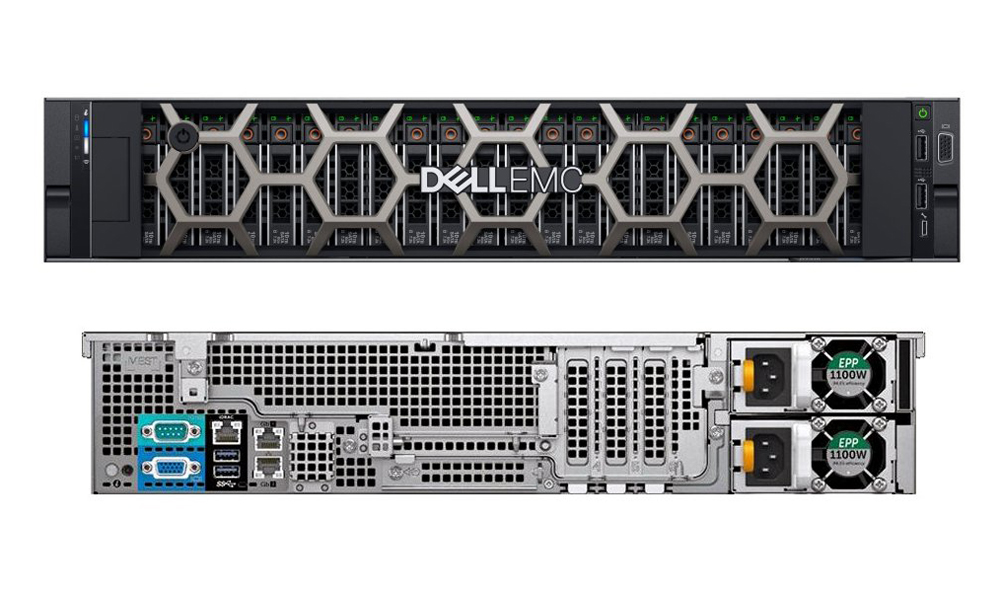

A great choice for data centres that want a single socket rack server with support for up to 32 CPU cores, a high memory capacity and a sharp focus on storage-centric workloads
-
+
Core-dense 1P server; High memory capacity; Versatile storage features with NVMe SSD support; Good expansion potential; Quality remote management
-
-
Internal design could be tidier; Cold-swap fans; iDRAC9 needs a firmware update

Dell EMC has embraced AMD's EPYC server processors wholeheartedly by launching three new rack server platforms that aim to offer a cost-effective alternative to Intel's Xeon Scalable Processor (SP) family. In this exclusive review, we look at the PowerEdge R7415 which is designed to deliver an enterprise-class single-socket (1P) server with a tempting storage proposition.
The R7415 is available with a good range of EPYC options and our review system was supplied with a 24-core 2GHz EPYC 7401P. You currently have five other choices, so you can save a pile of cash and go for an entry-level 8-core 2.1GHz 7251 or splash out on a super-strength 32-core 2GHz 7551P or 2.2GHz 7601.
Putting this many cores and threads in a 1P server is no mean achievement and represents a serious alternative to more costly 2P Xeon SP servers. Another bonus is the EPYC SoC (system on chip) has eight integral memory channels and supports a massive 2TB of fast 2,666MHz DDR4 LRDIMM memory -- the lower-end Silver 4100 and Gold 5100 CPUs only support 768GB of 2,400MHz memory per socket.
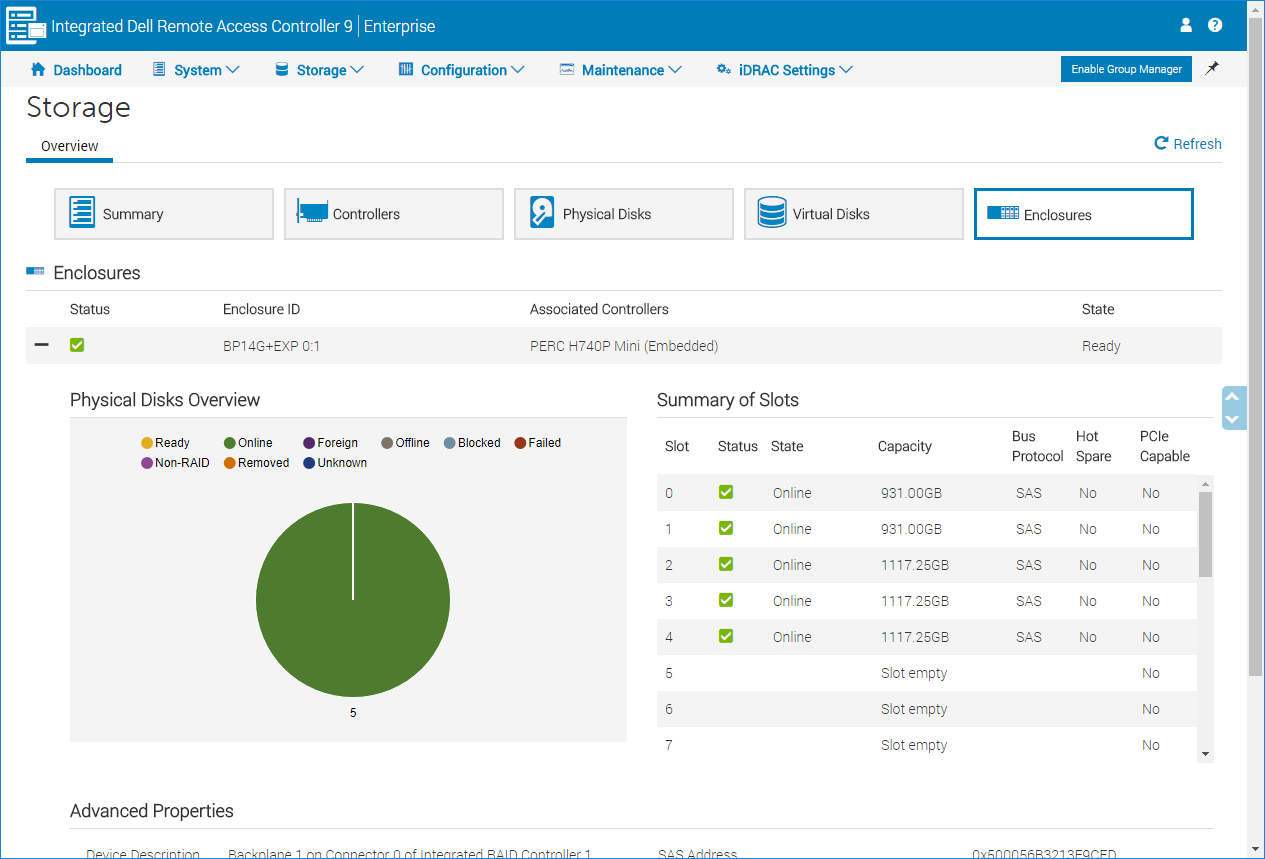
Dell EMC PowerEdge R7415: Storage features
The R7415 offers plenty of storage options so choose your backplane carefully to save upgrading later on. Base systems start with an 8-drive LFF hot-swap backplane or you can dispense with the optical drive panel and go for a full 12-drive LFF version.
The latter can be upgraded further with an optional dual-drive LFF hot-swap bay that fits at the rear. Next up is a 24-drive SFF hot-swap backplane which comes with an integral SAS expander board allowing a single RAID card to manage them all.
The R7415 supports up to 12 NVMe SSDs and this is facilitated with a special 24-drive backplane that includes 6 dual-port PCI-Express (PCIe) ports. Our review system includes this and the ports are all cabled directly to the PCIe sockets at the rear of the motherboard, allowing universal drive bays 12-23 to support NVMe SSDs or standard SFF hard disks.
The motherboard doesn't have embedded RAID and our system includes the top-dog PERC H740P Mini SATA/SAS3 card which snaps into a dedicated slot on the motherboard and is cabled directly to the backplane SAS expander. Along with support for dual redundant RAID6 arrays, it includes 8GB of NVRAM cache plus battery backup, although only 4GB is currently enabled with the full complement awaiting a future firmware upgrade.
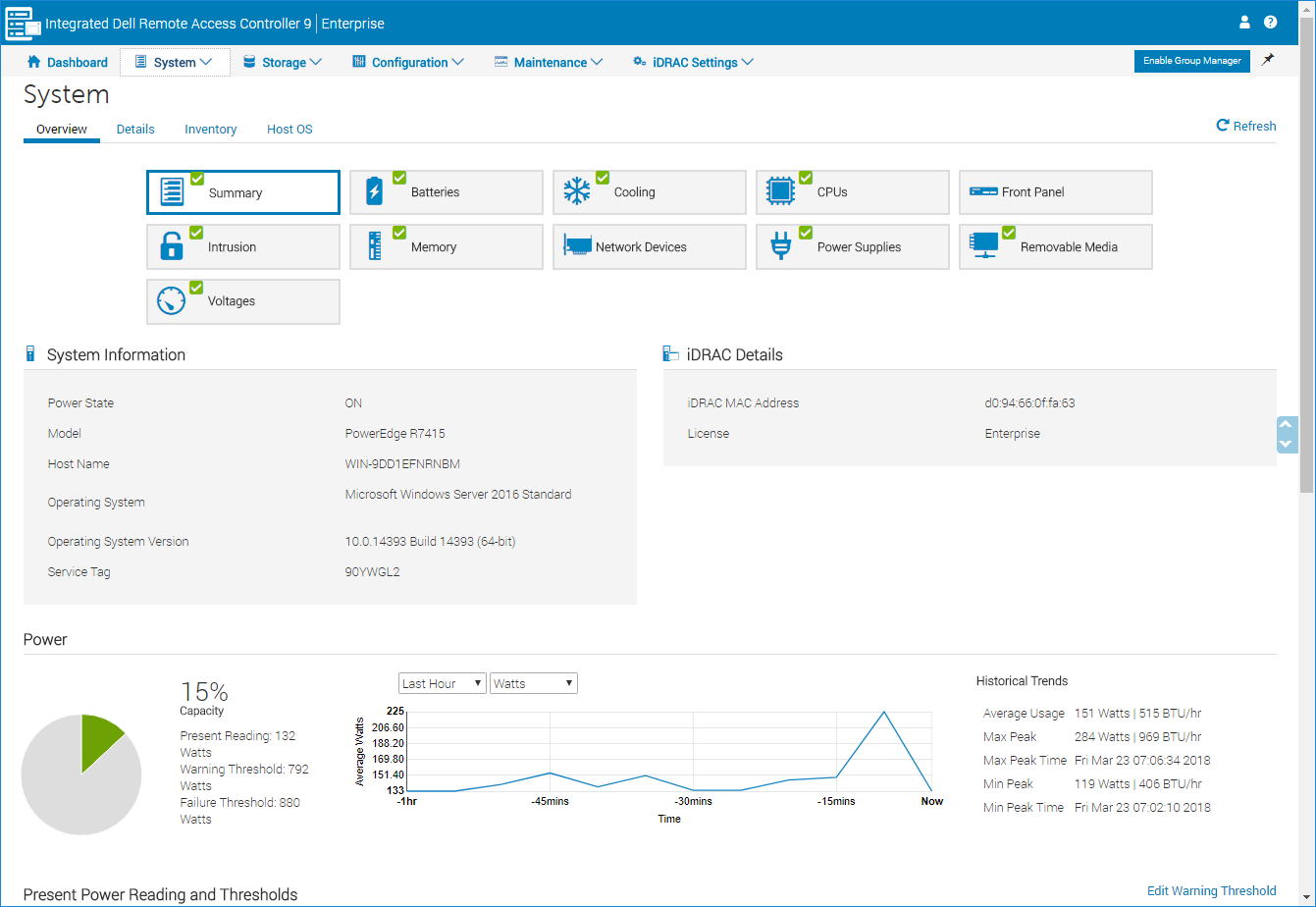
Dell EMC PowerEdge R7415: Design and upgrades
Internally, the server is reasonably well designed - although its six high-performance cooling fan modules are only the cold-swap variety. Replacing a failed fan could be fiddly, as some of the modules have their power connectors obscured by the drive backplane interface cables which will also need removing to gain access.
The CPU and 16 DIMM slots are covered by a large plastic air shroud but to remove this, you'll first need to extract the rear 2-slot PCIe riser card which is retained with three screws. Our system includes a healthy 128GB of DDR4 RDIMM but with Dell EMC only offering 64GB LRDIMM modules, the maximum you can currently go to is 1TB.
The server has dual embedded Gigabit ports and our review system includes the dual-port 10GBase-T mezzanine LOM card which fits in a dedicated slot alongside. Systems without the rear dual-drive LFF bay can use the two PCI-Express slots on the motherboard.
Dell EMC's BOSS (boot optimized storage solution) dual M.2 SSD card does away with the need to put the OS on a hard disk and the card supports mirroring across the SSDs. The R7415 also supports a dual microSD card module which has its own dedicated slot and is designed for running embedded hypervisors.
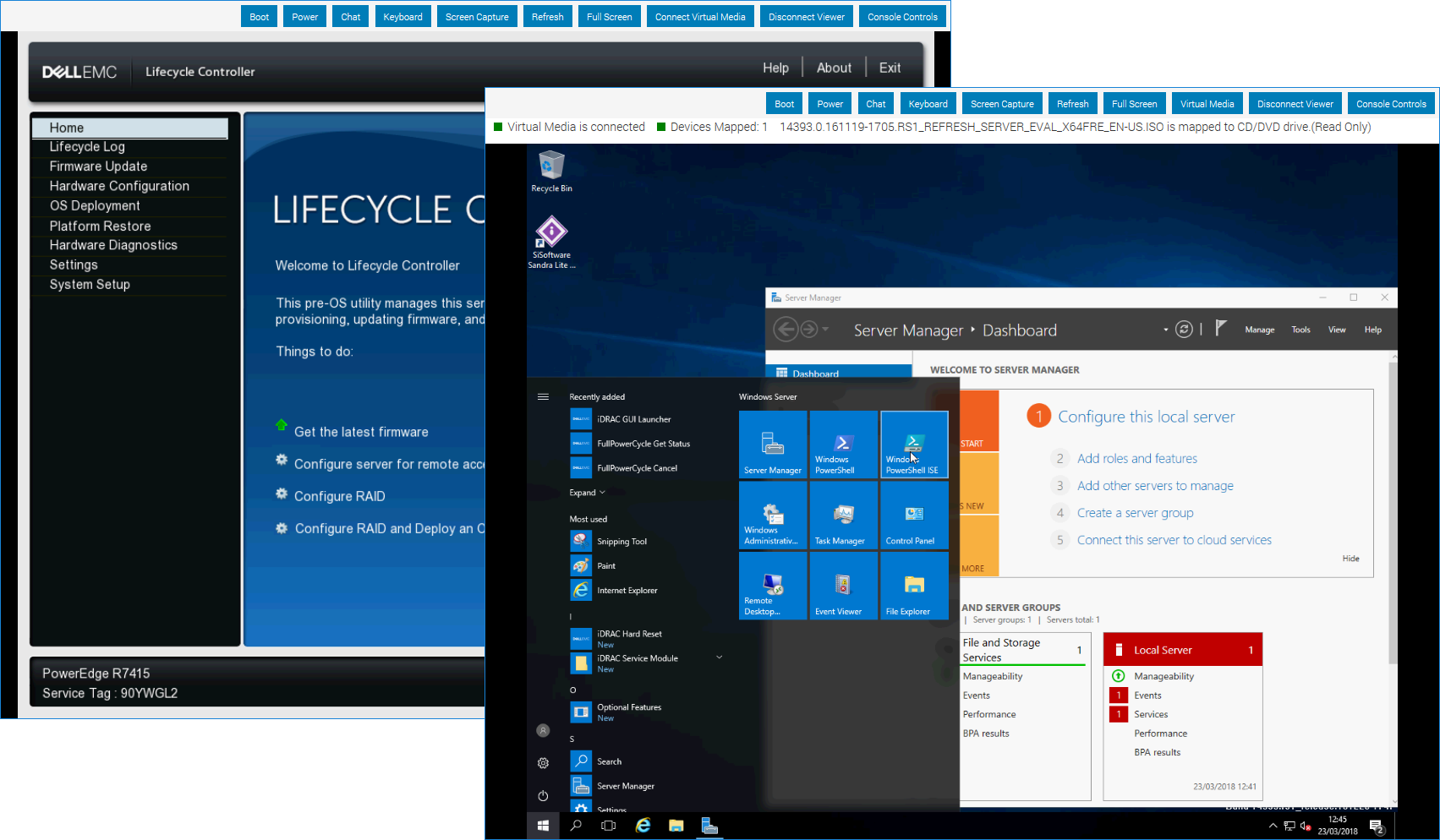
Dell EMC PowerEdge R7415: Power and management
The price of our system includes two 750W hot-plug PSUs and we found consumption to be very reasonable, with the system pulling 118W in idle and peaking at 270W under heavy CPU load. An HPE ProLiant DL380 Gen10 with two 12-core 2.3GHz Xeon Gold 5118 CPUs, 64GB of memory and dual 800W PSUs consumed 81W in idle and 272W under extreme load.
Server management is very good; the embedded iDRAC9 controller delivers a well-designed web interface offering plenty of system and component status information. The System screen shows details on power usage and cooling efficiency but is currently missing the performance graphs for the CPU, memory and I/O - Dell EMC is working on a firmware upgrade to remedy this.
The Quick Sync 2 feature is perfect for local management and we used it to connect our iPad over Bluetooth via the OpenManage Mobile (OMM) iOS app. Using OMM to scan the QR code on the pull-out system label, we had the R7415 loaded in seconds and could view all server information, alerts plus health status and launch a remote virtual console.
For general systems management, OpenManage Essentials will soon be replaced with the new OpenManage Enterprise. It's been in development for a long time now but we ran a Hyper-V VM of the latest technical release in the lab and were able to add the server's iDRAC9 to its console, view plenty of details on system status, automate routine maintenance tasks and remotely control its power.
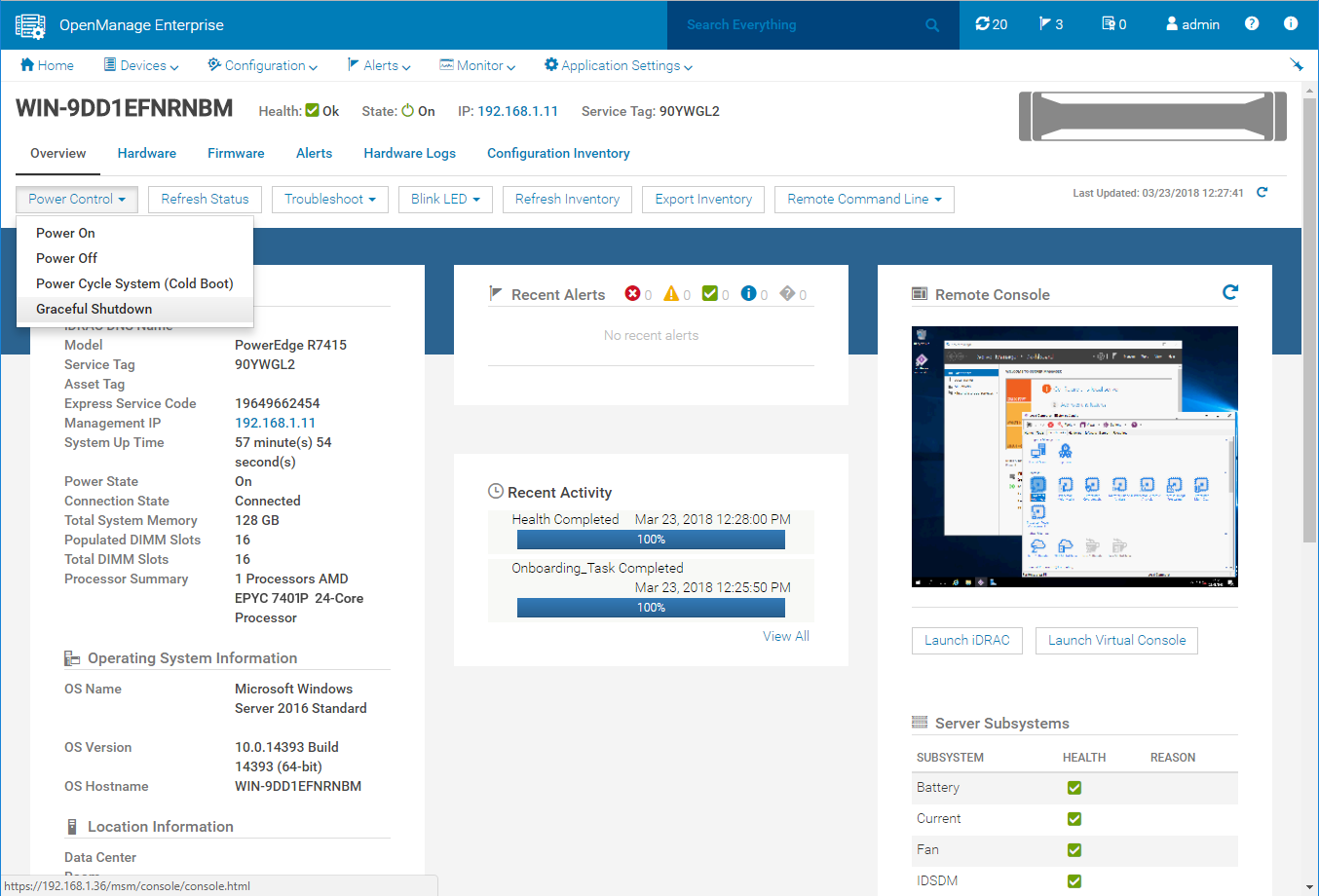
Dell EMC PowerEdge R7415: Verdict
Internal design could be tidier but the PowerEdge R7415 is offering an impressive storage package for the price with plenty of room to expand. With AMD EPYC on-board, it scores over 2P Xeon SP servers for sheer core density and when Dell makes 128GB LRDIMMs available, it'll beat them on memory capacity as well.
Verdict
A great choice for data centres that want a single socket rack server with support for up to 32 CPU cores, a high memory capacity and a sharp focus on storage-centric workloads
Chassis: 2U rack
CPU: 2GHz 24-core AMD EPYC 7401P
Memory: 128GB ECC DDR4 RDIMM (max 2TB with 128GB LRDIMMs)
Storage bays: 24 x SFF hot-swap
RAID: Dell PERC H740P Mini/8GB NVRAM cache/BBU
Array support: RAID0, 1, 10, 5, 6, 50, 60
Storage included: 2 x 1TB 7.2K NLSAS, 3 x 1.2TB 10K 12Gbps SAS SFF HDDs
Network: 2 x Gigabit/2 x 10GBase-T Mezzanine LOM
Expansion: 4 x PCI-e 3.0 slots (with riser)
Power: 2 x 750W Platinum Plus hot-swap PSUs
Management: Dell iDRAC9 Enterprise
Warranty: 3Yr ProSupport On-Site NBD
Get the ITPro daily newsletter
Sign up today and you will receive a free copy of our Future Focus 2025 report - the leading guidance on AI, cybersecurity and other IT challenges as per 700+ senior executives
Dave is an IT consultant and freelance journalist specialising in hands-on reviews of computer networking products covering all market sectors from small businesses to enterprises. Founder of Binary Testing Ltd – the UK’s premier independent network testing laboratory - Dave has over 45 years of experience in the IT industry.
Dave has produced many thousands of in-depth business networking product reviews from his lab which have been reproduced globally. Writing for ITPro and its sister title, PC Pro, he covers all areas of business IT infrastructure, including servers, storage, network security, data protection, cloud, infrastructure and services.
-
 Enterprises face delicate balancing act with data center sustainability goals
Enterprises face delicate balancing act with data center sustainability goalsNews High energy consumption, raw material requirements, and physical space constraints are holding back data center sustainability efforts, according to new research from Seagate.
By Emma Woollacott Published
-
 Cleo attack victim list grows as Hertz confirms customer data stolen – and security experts say it won't be the last
Cleo attack victim list grows as Hertz confirms customer data stolen – and security experts say it won't be the lastNews Hertz has confirmed it suffered a data breach as a result of the Cleo zero-day vulnerability in late 2024, with the car rental giant warning that customer data was stolen.
By Ross Kelly Published
-
 Women show more team spirit when it comes to cybersecurity, yet they're still missing out on opportunities
Women show more team spirit when it comes to cybersecurity, yet they're still missing out on opportunitiesNews While they're more likely to believe that responsibility should be shared, women are less likely to get the necessary training
By Emma Woollacott Published